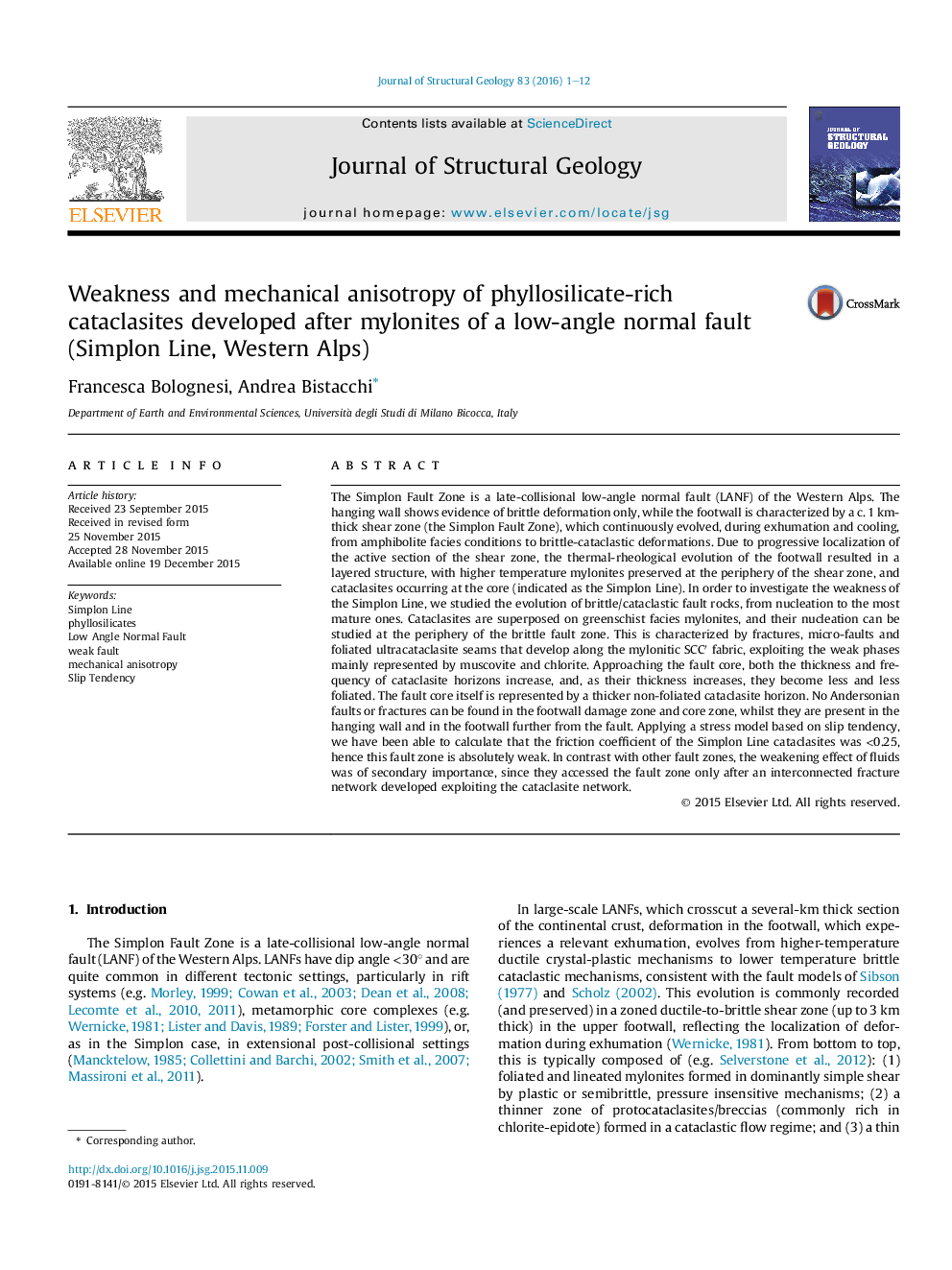| Article ID | Journal | Published Year | Pages | File Type |
|---|---|---|---|---|
| 4732966 | Journal of Structural Geology | 2016 | 12 Pages |
•The Simplon Line is a relatively weak fault.•Cataclasites nucleate along misoriented phyllosilicate-rich mylonitic foliation.•High-angle Andersonian faults and fractures do not develop.•Friction coefficient is μmyl<0.25, hence the SL is also an absolutely weak fault.•The weakness of the SL is not related to the effect of fluids, but to phyllosilicates.
The Simplon Fault Zone is a late-collisional low-angle normal fault (LANF) of the Western Alps. The hanging wall shows evidence of brittle deformation only, while the footwall is characterized by a c. 1 km-thick shear zone (the Simplon Fault Zone), which continuously evolved, during exhumation and cooling, from amphibolite facies conditions to brittle-cataclastic deformations. Due to progressive localization of the active section of the shear zone, the thermal-rheological evolution of the footwall resulted in a layered structure, with higher temperature mylonites preserved at the periphery of the shear zone, and cataclasites occurring at the core (indicated as the Simplon Line). In order to investigate the weakness of the Simplon Line, we studied the evolution of brittle/cataclastic fault rocks, from nucleation to the most mature ones. Cataclasites are superposed on greenschist facies mylonites, and their nucleation can be studied at the periphery of the brittle fault zone. This is characterized by fractures, micro-faults and foliated ultracataclasite seams that develop along the mylonitic SCC′ fabric, exploiting the weak phases mainly represented by muscovite and chlorite. Approaching the fault core, both the thickness and frequency of cataclasite horizons increase, and, as their thickness increases, they become less and less foliated. The fault core itself is represented by a thicker non-foliated cataclasite horizon. No Andersonian faults or fractures can be found in the footwall damage zone and core zone, whilst they are present in the hanging wall and in the footwall further from the fault. Applying a stress model based on slip tendency, we have been able to calculate that the friction coefficient of the Simplon Line cataclasites was <0.25, hence this fault zone is absolutely weak. In contrast with other fault zones, the weakening effect of fluids was of secondary importance, since they accessed the fault zone only after an interconnected fracture network developed exploiting the cataclasite network.
